July 12, 2018
Highlights from Dellwood Seamount
Estimated reading time: 0 minutes
For two days, we explored Dellwood Seamount on the Northeast Pacific Seamount Expedition. What we saw was incredible – octopus, squid, rockfish, coral, sponges, sea stars and so much more.
Dellwood Seamount rises from a depth of 2,359 metres below the surface. Dellwood is unique because of its associated hydrothermal vents, which are currently considered inactive. Hydrothermal vents are essentially an area in the ocean where magma meets seawater!
Here are some updates from Dellwood:
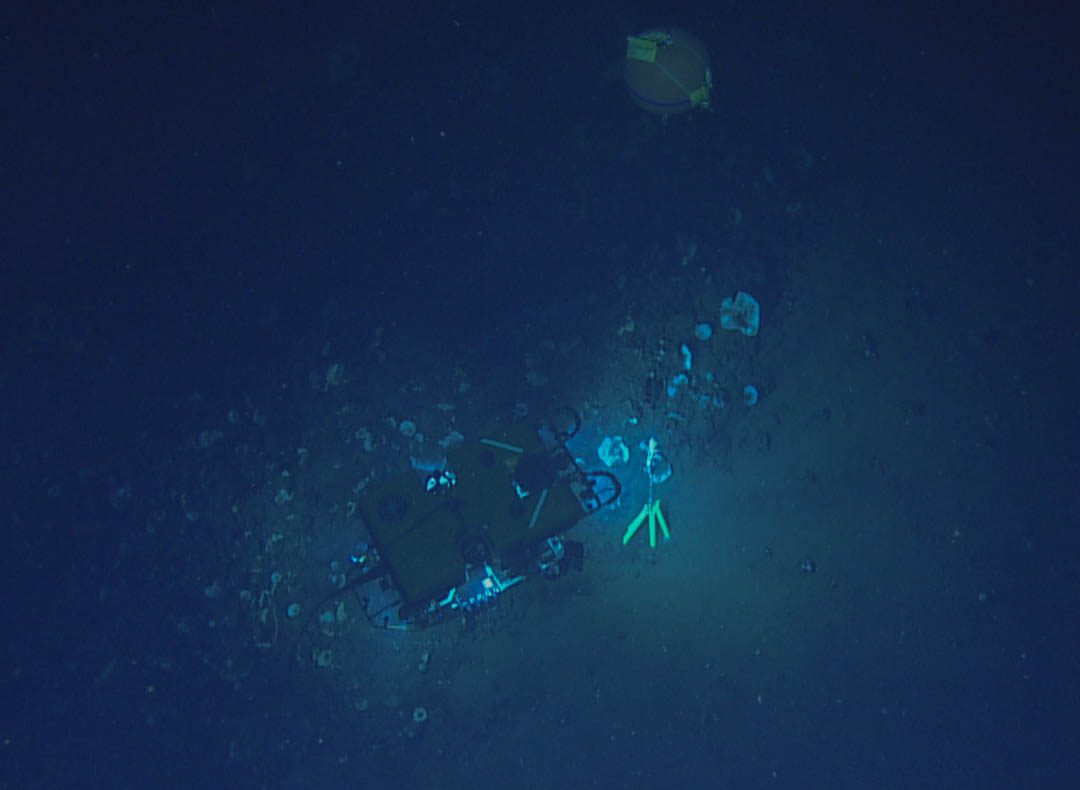
We deployed long-term monitoring equipment! The first of its kind, this sophisticated instrument will continuously record ocean conditions in this remote ecosystem. It was created by Ocean Networks Canada and was placed 840 metres deep on Dellwood Seamount. Photo Credit: Ocean Exploration Trust/Northeast Pacific Seamount Expedition Partners
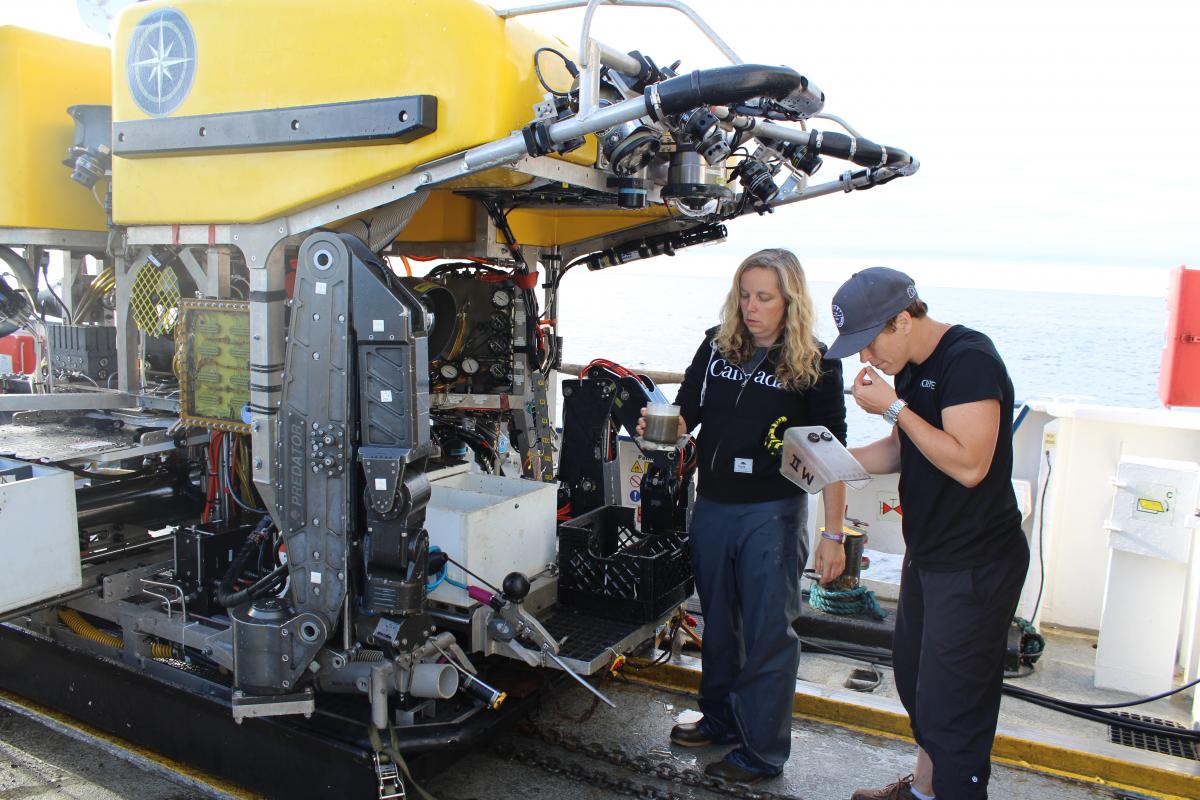
Lava rock formations were tested using the ROV arm, by picking them up and seeing if they crumbled, which they did! The samples were then collected and brought on board for the team to further examine. This investigation included smelling them to see if they detected the smell of rotten eggs, which would indicate sulfur. They did not smell like eggs from what Fisheries and Oceans Canada scientist Cherisse, pictured here, could detect. These yellow rocks indicate potential signs that hydrothermal vents were in the area, but during our survey we did not identify any active ones. Photo Credit: Northeast Pacific Seamount Expedition Partners
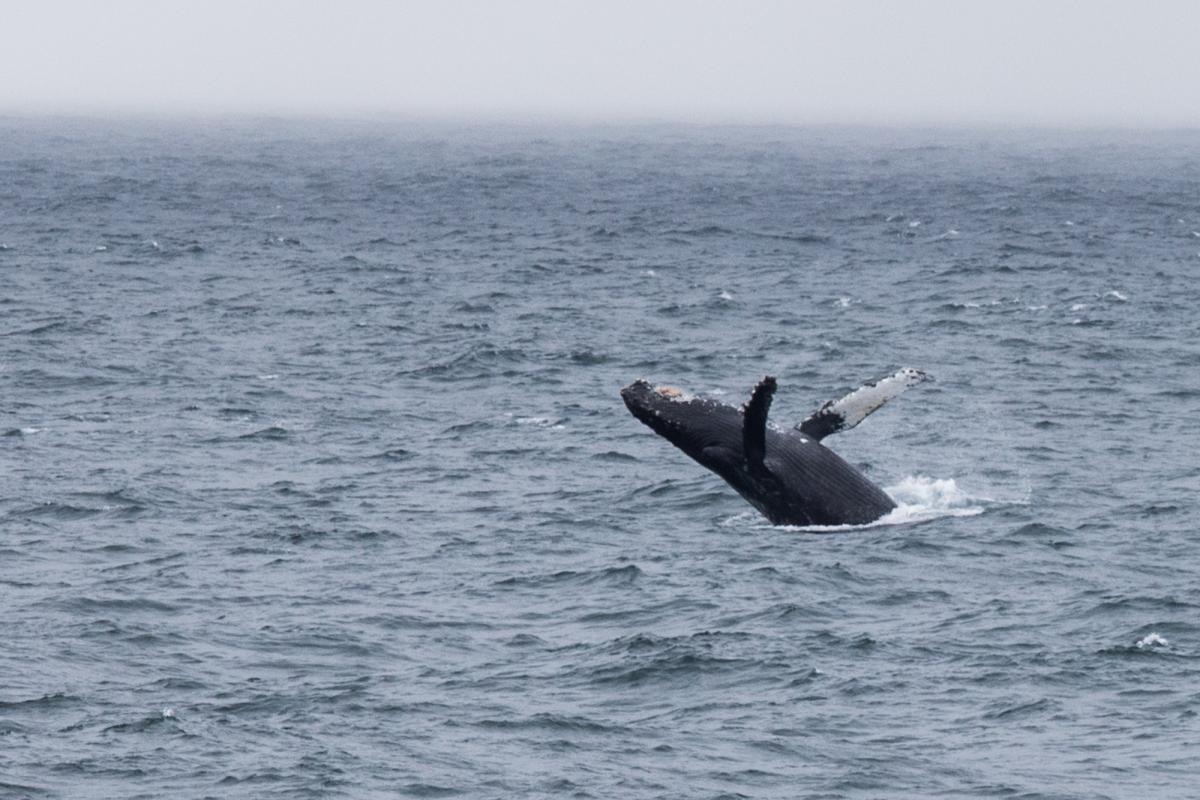
While transiting to Dellwood, our expedition team was greeted by a group of humpback whales breaching over and over again. Whales are known to frequent seamounts as they are excellent feeding grounds. Even between dives to the seafloor, the expedition team is documenting ocean species by keeping a lookout for life at the sea surface including whales, sharks, sunfish and seabirds. Photo Credit: Northeast Pacific Seamount Expedition Partners
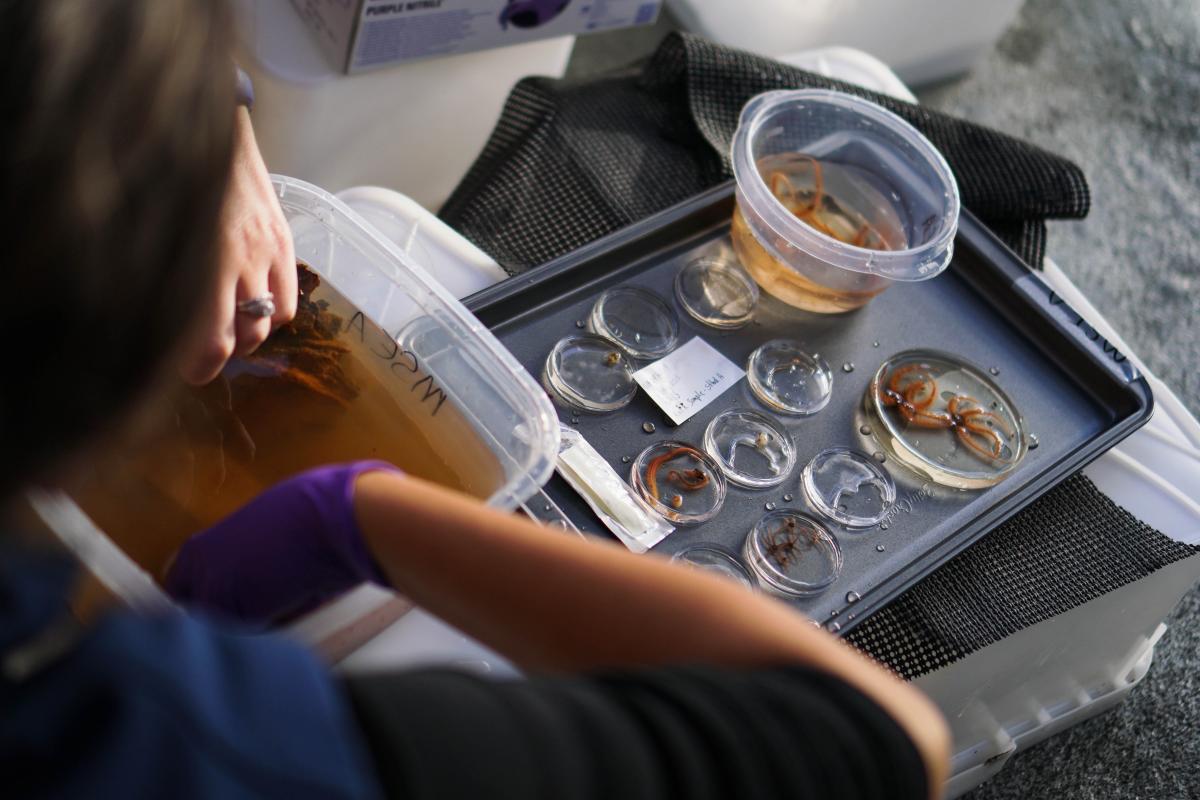
Specimen samples were collected, including sponges, soft corals, black corals, sea stars, sea cucumbers and water samples for eDNA testing! During one of the dives, a viewer on the livestream wrote in and asked what species of sea star was on the screen. The scientists didn’t know so they collected it for further testing! Photo Credit: Fisheries and Oceans Canada
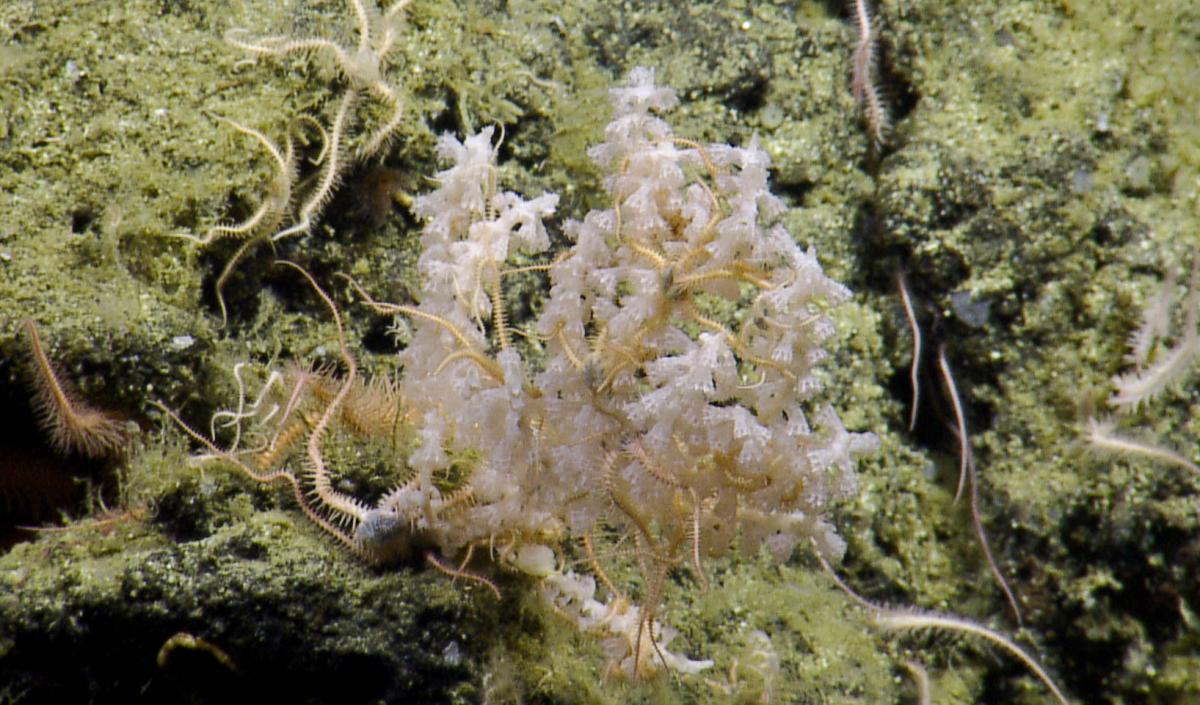
The brittle sea stars shown here climbed up on a coral to give them a better vantage point to filter feed. The coral doesn’t mind being used as a stepping stool though because while they are attached they help to keep the corals clean, an example of a symbiotic relationship. Photo Credit: Ocean Exploration Trust/Northeast Pacific Seamount Expedition Partners
The Northeast Pacific Seamount Expedition has just begun – we still have two seamounts to visit! We’ll be livestreaming the entire expedition from ProtectOceans.ca. Tune in!

